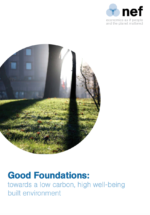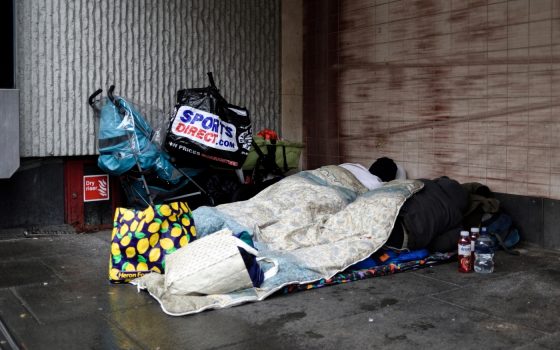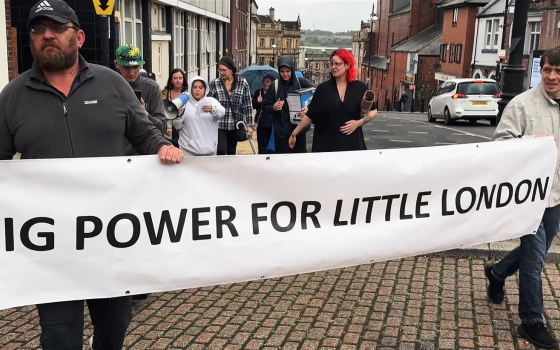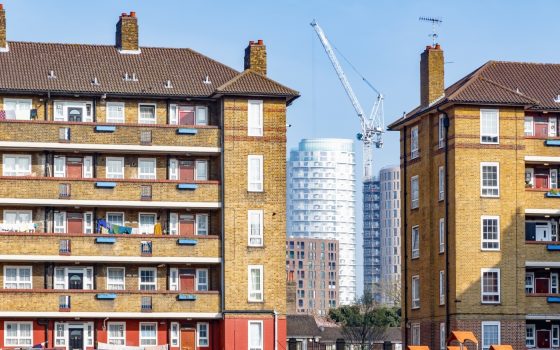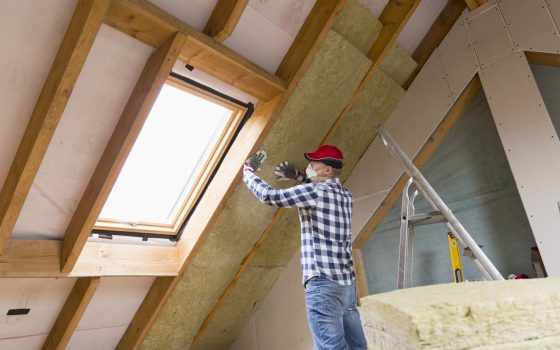Good foundations
Towards a low carbon, high well-being built environment
24 February 2012
How do buildings affect our well-being? And what impact do they have on the environment? This report, commissioned by the Happold Trust, explores how architects, engineers, planners and policymakers can ensure that new development projects work for people and the planet.
As efforts to patch up the current financial system continue, and investment into development projects begins to regain momentum, this report argues that a return to business as usual is not an option. Instead, it prompts all of us, including professionals working within the built environment sector, to consider what and who development and renewal projects are really for. In the light of a growing evidence base on the social, environmental, and economic features of neighbourhoods that support their inhabitants to live a good life, this report calls into question the viability of a model that uses financial return on investment as the single and most informative predictor of development success. Instead, it explores how the built environment sector can better connect the planning, design, and development of place to meaningful objectives – the enjoyment of good lives for inhabitants now and in the future.
The UK has a rich history on which to draw when it comes to shaping and creating places that meet current and future needs in times of unprecedented challenge – from the pioneer industrialists of the early Industrial Revolution and late nineteenth century, to Ebenezer Howard’s Garden City movement, to the subsequent legislative changes and actions by government which saw the introduction of new towns across the country.
But today brings with it a different set of challenges no longer about how to deal with rapid urban population growth or post-war reconstruction – and we must again reach out to find a development model that is fit for purpose. Intractable problems are evident across many of our communities and neighbourhoods – including increasing spatial inequality, poor community relations, low levels of trust and belonging among young people, weak local economies, poor housing quality, and increased anxiety about household debt. This is now matched by the threat of irreversible climate change and the use of finite environmental resources at a rate faster than they can be replenished.
Of course, failing to address the socio-economic and environmental concerns of our times is the more expensive option in the long run, both in terms of the costs incurred to our communities and the drain on our shared but increasingly scarce public resources. The policies, strategies, and guidance published over the last decade have begun to explicitly link the development of our built environment to people’s well-being and the strength of our communities, but an implementation gap between aspirations and real world outcomes clearly remains.
Good Foundations argues that a radically different view of success is needed in relation to the way we plan, design, and develop the built environment if we are to translate the thinking that has emerged into a genuinely new way of doing things.
It says that if we are ultimately concerned with building neighbourhoods that work for the people who live in them both now and in the future, then the promotion of well-being within environmental limits should be the overarching aim of development activity. To achieve this, it suggests a different, and more holistic, approach is taken which balances social, economic and environmental value with financial return.
What really matters for people and place?
The scoping research which forms the foundation of this report took place over a period of 12 months in two neighbourhoods in Peckham, London. Its aim was to explore the links between the built environment, neighbourhood regeneration, and people’s well-being. It was supported by secondary research, consultations, and a workshop with people working in the built environment sector.
Reflecting on our findings, this report describes how some of the basic assumptions that drive our understanding of success, and therefore the way we approach the development of our built environment, are flawed. The amount invested or the profit made, whilst important for some stakeholders, are not strong indicators of success when it comes to how people experience their day-to-day lives. By contrast, our research in Peckham found that certain planning and design features – such as access to green space and the provision of social hubs – matter to residents, affecting how people function and how they feel on a day-today basis. In addition, we found that the way in which a development or regeneration project is delivered on the ground matters, influencing the extent to which all stakeholders feel part of the place shaping and place making process and the connections which are fostered between people within the neighbourhood.
Similarly, we do not have to look far to appreciate the important role the built environment plays in contributing to the UK’s environmental footprint. At a time when 40 per cent of UK carbon emissions come from buildings alone, there is an unavoidable challenge to reduce the environmental impact of our built environment alongside efforts to recognise and support its role in promoting a good life for people.
An alternative vision of success: sustainable well-being
Drawing from the research findings, this report proposes an alternative vision of success; one where our neighbourhoods better support a good life for their inhabitants while also respecting the environmental resource limits upon which all our lives depend. In short, we suggest that development projects should be working to promote high well-being.
Place Happiness captures three core aspects of well-being to which the built environment can contribute:
- Personal well-being – people’s experience of life in relation to their physical and psychological well-being.
- Social well-being – people’s experience of life in relation to those around them: their community.
- Economic and material well-being – people’s experience of life in relation to the conditions and circumstances of their lives, including their physical surroundings.
Place Sustainability captures two key ways in which buildings have an environmental impact:
- Resources used during construction or renovation.
- Resources used across the lifetime of its use.
We argue that this vision needs to be held and championed at the local level by local authorities, who would play a strategic oversight role to ensure any development projects contribute to sustainable well-being objectives. But applying the concepts of pH and pS will also need to be supported by changes to the development process, which will need to be led by the built environment sector itself.
A closer look at the development process
In this report, we break down the development process into three broad stages: place shaping, the process of agreeing a vision for a development project; place making, the process of embedding development objectives into design and delivery; and reviewing impact, the process of evaluating change. Establishing fully implementable mechanisms for shifting the culture of the built environment sector is beyond the remit of this report. Nevertheless, our research suggests that sustainable well-being could be supported by the following approach:
The development of a stakeholder value map at the place-shaping stage
It was clear from our research that more time and resources are required up front to determine how value to multiple stakeholders can be realised in practice. Too often, existing personal, social, and material well-being in communities is not adequately recognised or protected. And the carbon footprint of buildings is too often thought about only at the point of delivery – even though the sustainability of the supply chain has to be considered at the planning stage to put an effective process in place to achieve it.
Our research in Peckham indicated that local involvement at the earliest stages of the development process is critical for building community networks and fostering a sense of ‘neighbourliness’ as well as creating trust between stakeholders and the delivery of more successful developments that respond to local needs.
We suggest that the development of a stakeholder value map can help a project to retain existing value and create added value by working with all key stakeholders at the earliest stages of the process to identify social, environmental, and economic outcomes that support well-being. Using a co-production approach, where professional knowledge is mutually exchanged with the information and experience held by local people, the neighbourhood features that enhance and limit well-being can be identified. Using the stakeholder value map, stakeholders can work together at the outset to agree:
- All those stakeholders who are affected by or who can affect the outcomes of the development project.
- The community assets and resources that will be retained and built upon.
- The neighbourhood qualities to be improved.
- The changes that the development project will either wholly or in part deliver.
- The changes that will directly contribute to wider, strategic local priorities.
The development of a design proof for sustainable well-being at the placemakingstage
Increasingly, the interdependence of well-being and sustainability is being recognised at the conceptual level. Much more needs to be done, however, to apply this thinking to the way we design and deliver development and renewal projects. Designing for pH requires that both the structural factors (e.g., employment opportunities, income inequality) affecting economic and material well-being, as well as the personal and social dimensions of people’s experience of their lives are factored into development objectives. Designing for pS requires the use of sustainable materials and technologies, the promotion of low-environmental-impact lifestyles, and a longer-term duty of care.
We suggest the use of a design proof for sustainable well-being to better focus on well-being and environmental outcomes, and the interdependence between them. This should be in place before development activity begins to ensure that sustainable well-being is core to the development process from the outset. The design proof should detail:
- The design features and activities that will deliver pH and pS outcomes identified in the stakeholder value map.
- The professional and community resources – physical, human, social, environmental, and economic – that can be drawn upon in the delivery process.
- Any win-win opportunities for promoting high well-being and low environmental impact.
- Any trade-offs across social, environmental, economic, and financial outcomes that need to be made.
The use of well-being and sustainability measures to track impact
Too often, a focus on financial indicators of success can narrow attention and distort focus away from objectives that really matter to people and communities. Part of the reason that commercial measures win out is because alternative measures of value are not being fully incorporated into decision-making processes. Even when attempts to measure effects on individuals, communities, or the environment are made, it is often the case that inadequate indicators and poor or under-resourced data collection methods obscure the real impact – positive and negative – of development projects. We suggest a number of ways that measurement could more directly support an approach to development that places people’s well-being and the environment at its centre:
- The use of subjective indicators to focus on people’s experience of life in a place, as well as the objective conditions of a place.
- The selection of indicators that directly correspond to the outcomes and activities identified in the stakeholder value map and design proof for sustainable well-being.
- Taking a long-term view, which looks to post-occupancy surveys and sustainable efficiency gains as markers of good design.
- Collecting data before the development process has begun, to provide a baseline for subsequent reviews.
- Regular and systematic reviews that track changes over time, to help identify what works and inform improvements.
- The use of composite indicators to discourage perverse incentives and provide an honest appraisal about potential trade-offs between outcome areas.
Recommendations
In this report, we suggest an outline for a way forward that puts people’s lived experience and the limits of the planet’s resources at the heart of the development process. Implementing the approach identified in this report will require further consideration, research, and application in practice. There are, however, some clear avenues for change, which we believe represent the first steps. They fall into five categories which set out the need to: work to a broader definition of value, strengthen leadership, take a different approach to stakeholder engagement, build capacity to measure what matters, and test out ideas in practice.
1. Work to a broader definition of value
- Government should re-visit and amend planning legislation, to stipulate a requirement for buildings and development projects to create value across social, environmental and economic outcomes. This will ensure that a wider definition of public benefit is specified in accordance with Treasury guidelines.
- Industry experts and government need to work together to create new financial instruments. These should aim to incentivise the building of developments that deliver sustainable well-being. There is considerable scope to look at the potential impact of alternative taxes – including varieties of capital gains, land value, and inheritance taxes – that take into account ‘use value’ as well as the ‘market value’ of buildings. Tax breaks to make conversion and improvement, rather than new-build, more attractive to the built environment sector would be a good place to start.
- Institutions educating the next generation of built environment professionals need to incorporate well-being and sustainability issues throughout their curriculum, if we are to see well-being and sustainability more consistently embedded into the heart of design.
- The built environment sector should establish an accreditation scheme, which sets a standard for buildings and developments that works across social, environmental, and economic outcomes to achieve sustainable well-being. Recognition should be provided within the sector for innovative approaches to development and should be the basis for encouraging, rewarding, and showcasing success.
2. Strengthen leadership
- Local authorities need to drive forward a vision for sustainable well-being. They should be embedding sustainable well-being within formal agenda setting tools for the area, such as the Sustainable Community Strategy and the Local Area Agreement.
- Companies, organisations and professionals working in the built environment sector should commit to a vision statement which makes pH and pS core to their way of doing business. The aim of this vision statement should be to shift the focus given to social and environmental outcomes in corporate social responsibility (CSR) initiatives into the core values driving the day-to-day running of the business.
- Bodies representing built environment professionals like the Commission for Architecture and the Built Environment (CABE) and professional associations like the Royal Town Planning Institute (RTPI) and the Royal Institute of British Architects (RIBA) should take responsibility for leading a cultural shift within the sector. They should re-connect debates on design quality with the issues that matter most for well-being and environmental sustainability. Awareness raising should be accompanied with support for practical action.
3. Take a different approach to stakeholder engagement
- A co-production approach to engaging existing community assets and resources should become an integral part of the development process. This requires that professionals work with, not just for, local residents, businesses, and community groups.
- Investors need to finance stakeholder engagement at the earliest stages of the development process to ensure it is genuinely useful to the process and its outcomes.
- Invest in skills development. Being able to facilitate conversations and joint decision-making which take into account the views of different stakeholder groups requires a new skills base within the sector in engagement and coaching techniques.
4. Build capacity to measure what matters
- Government should work with the built environment profession to identify a standardised framework for measuring success. The aim should be to capture the wider social, environmental, and economic impact that development projects should be having, in accordance with legislation and Treasury guidelines on public spending.
- Bodies representing the built environment sector should provide guidance on measurement to support organisations looking to showcase the sustainable well-being impacts of their development projects. A collaborative approach should be taken to sharing good practice and learning about what works and why.
5. Test and develop ideas in practice
- A programme aiming to bring the two principle objectives – pH and pS – together in practice should be piloted. Government should work with the built environment profession and local authorities to identify sites for implementing a sustainable well-being approach todevelopment and renewal. Such an approach will require investment up front to resource meaningful stakeholder engagement at the earliest stages of the development process. It should also seek to test and refine the approaches outlined in this report – the stakeholder value map, design proof for sustainable well-being and the impact review cycle – in applied settings, to determine their viability and potential to enhance personal, social, and material well-being with least environmental consequence.



